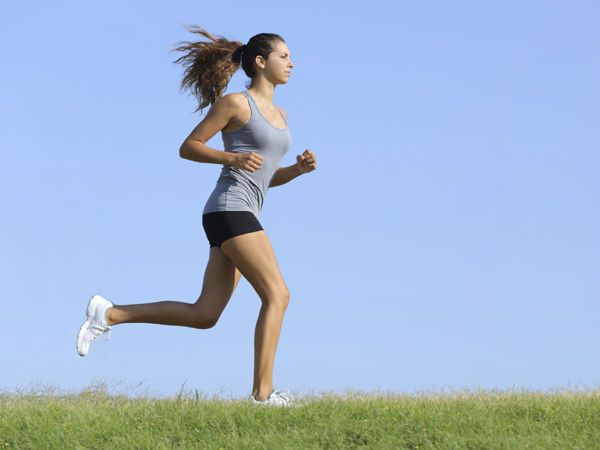
Ankle sprain occurs when running on uneven or slippery surfaces
When you subject your body to force while running, injuries can’t be far behind. It’s important then that you are aware of the aches that may strike you, and learn to identify signals.
A word of caution: Never run when you are feeling unwell, if you have been experiencing pain that hasn’t settled down, and if you feel a sudden, sharp pain when running. Top orthopaedic Dr.Arun Mullaji preps you for January’s Mumbai Marathon. Here are five common running injuries and how to dash past them.
Shin Splints
The pain occurs on the inner side of your shinbone (stretches from knee to ankle), sometimes accompanied by swelling and tenderness. It’s triggered when excess force is exerted on the shinbone and tissues that link the muscles to the bone. It is often experienced by those with flat feet or rigid arches, or those who roll the foot inward on impact. You are also at risk if you run on slanting or hard surfaces, or wear incorrect or worn out shoes.
Heals with: Adding a compression dressing, changing your shoes, using arch supports, warming up with proper calf stretches, and adding strength training to your workout. Cross-training — cycling and swimming — helps, as does gradually building up your running speed and distance to prevent recurrence.
Ankle Sprain
This occurs when running on uneven or slippery surfaces. Typically, the foot turns inward, leading to stretching and damage of ligaments (rubber bands) on the outer side of the ankle. This can result in acute pain, swelling and occasionally, bruising.
Heals with: Rest, ice, compression bandage and elevation (RICE), and sometimes needs a precautionary X-ray. Anti-inflammatory medication is helpful. There is little you can do to prevent them although recognising the onset of fatigue is key since they occur towards the end of a run. If you are sprains-prone, wear ankle supports, and try wobble-board exercises to strengthen the muscles.
Plantar Fasciitis
This occurs due to the inflammation of the plantar fascia, a connective tissue that runs from the bottom of the heel bone towards the toes along the sole. It is like the string of a bow, with the arch of the foot forming the bow. Every step causes tension within it, leading it to stretch. When the fascia is irritated or inflamed, it will lead to a stablike pain in the heel, typically when you hit foot to ground first thing in the morning. Those who are overweight, have flat feet, high foot arches, or run with excess pronation (rolling inward of the foot), stand a higher chance of developing this condition.
Heals with: Correcting the underlying cause, and stretching the leg and foot. Pull the toes up towards the shin, hold for 30 seconds, relax and repeat several times. Curling your foot over a tennis ball is also helpful. Physiotherapy and cushioned heel supports can be used.
Achilles Tendonitis
It affects the Achilles tendon — the strongest and thickest tendon in the body which connects the calf muscles to the heel bone, and bears a burden with every step. Pain and stiffness occur in the heel and behind the ankle, which is worsened by running. It is sometimes accompanied by the thickening of the tendon, and swelling. It occurs due to repetitive stress, made worse by tight calf muscles, poor running style, incorrect footwear and presence of a bony spur (rare).
Heals with: RICE. If pain and swelling persist or recur, consider anti-inflammatory medicines, orthotic support, heel lifts, and physiotherapy. Strengthening the calf muscles (hold the banister, and stand on your toes on the edge of a stair. Gradually, lower your heels as far as possible, and then raise them) and stretching them (lean against a wall while keeping one knee stretched straight and heel flat on the ground, while bending the knee of the other leg placed a little in front, and attempting to push your hip forward) can prevent this problem from recurring. A serious case of tendonitis can lead to a complete tear which may require surgery.
Renner’s knee
This includes two conditions. Patello-Femoral Pain (PFPS) affects the front of the knee, under the knee cap, and gets worse while ascending and descending stairs, doing deep knee bends, and sitting for long. It’s typically associated with persons having knock knees, flat feet and ‘funny’ knee caps. The other, Ilio-tibial Band Syndrome (ITBS), leads to pain on the outer side of the knee, usually acute on onset, not connected with ascending or descending stairs or sitting for long.
Heals with: ITBS needs ice, rest, stretching and strengthening of the thigh muscles. It may require physiotherapy, anti-inflammatory medicines, corrective footwear, and alignment procedures in rare cases. PFPS requires weight reduction in the overweight, strengthening of the thigh muscles, running correctly (knees slightly bent and body leaning forward), and wearing inserts for flat feet. Avoid running downhill, or in a zig-zag manner. NEXT WEEK Treating injuries, overtraining, cross-training, and when not to run
Image courtesy: © Thinkstockphotos/ Getty images
More on >> Fitness




